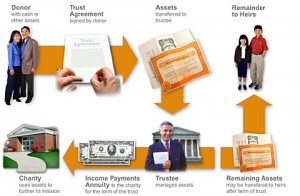During college I took a literature course from a professor who greatly respected Nobel Prize winning author, Ernest Hemingway. One characteristic of this great American’s writing style is the Iceberg Theory, also known as the “theory of omission.”
If a writer stops observing he is finished. But he does not have to observe consciously nor think how it will be useful. Perhaps that would be true at the beginning. But later everything he sees goes into the great reserve of things he knows or has seen. If it is any use to know it, I always try to write on the principle of the iceberg. There is seven-eighths of it underwater for every part that shows. Anything you know you can eliminate and it only strengthens your iceberg. It is the part that doesn’t show. If a writer omits something because he does not know it then there is a hole in the story.
— Ernest Hemingway
What if non-profit organizations kept this iceberg principle in mind when talking to major donors? What if their executive directors and development officers started “observing” their donors—consciously listening for the “part that doesn’t show” – the 7/8 they can’t see or perceive because donors typically reveal only the tips of their icebergs?  Donors do not consciously omit information, but they only reveal what is necessary to answer your questions. And isn’t the typical question, “Are you willing to increase your donation amount this year?”
Donors do not consciously omit information, but they only reveal what is necessary to answer your questions. And isn’t the typical question, “Are you willing to increase your donation amount this year?”
The question is interesting because it ignores the 80% of donor wealth tied to non-cash assets like land and buildings, a business, or holiday home. A typical family earning $100,000 a year gives a little over $2,500 to charity. What wonderful things could happen if donors only knew how to leave a legacy by leveraging their wealth tied up in vacation homes or vacant land!
At the Stewardship Foundation we provide tools and support that advisors and non-profits can use to help their donors realize the charitable intent potential hidden “below the iceberg.” For example, on our website we post Questions for Donors to help development offices and other financial professionals listen for certain donor concerns that may indicate a willingness to move from “donation” to “legacy.”
The tragic story of the Titanic illustrates the danger for those who ignore the Iceberg Theory’s suggestion that when a writer (think nonprofit or charity or donor) omits something then there is a “hole in the story.” By ignoring the wealth that lies beneath the iceberg, charities and nonprofits may lose the opportunity for sustainability, and donors lose the opportunity to accomplish great things during their lifetime.
If you are a nonprofit or charity and want to learn how you can apply Hemingway’s wisdom to your development efforts, then we’d love to share our knowledge about transformational giving. If you are a donor who has never considered using your “hidden wealth” to make a difference in your community during your lifetime, then we’d love to share our knowledge about planned giving. As a huge Hemingway fan, it would be my pleasure to honor this great American author by helping in some way to plug a few holes and leave our community and causes in a better place because we did.
 Tonight’s first presidential debate signals that the 2012 election is fast approaching. Regardless of the occupant in the oval office in 2012, tax changes are inevitable. Leon C. LaBrecque addresses many of your concerns in his article,
Tonight’s first presidential debate signals that the 2012 election is fast approaching. Regardless of the occupant in the oval office in 2012, tax changes are inevitable. Leon C. LaBrecque addresses many of your concerns in his article,